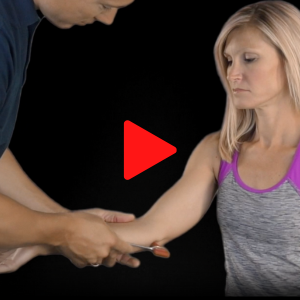The 6 Features of Cubital Tunnel Syndrome
Reading time: 3 minutes
Chiropractic Assessment of Cubital Tunnel Syndrome
As an evidence-based chiropractor, you see enough cases of carpal tunnel syndrome to recognize that it’s the most pervasive peripheral nerve entrapment in the upper extremity, but did you know that cubital tunnel syndrome is the second most common? (1)
“It is estimated that up to 5.9% of the general population have had symptoms of cubital tunnel syndrome, which, if left untreated, can significantly alter an individual's quality of life.” (2)
Do I Have Cubital Tunnel Syndrome?
According to Collins et al. (2023), the 6 criteria to diagnose cubital tunnel syndrome include: (3)
1. Paresthesia in ulnar nerve distribution:
The most typical early symptom is numbness and tingling in the ring finger and little finger like the hand has "fallen asleep."
2. Symptoms precipitated by increased elbow flexion:
In cubital tunnel syndrome, symptoms include tingling, numbness, and pain in the ulnar nerve distribution during elbow flexion due to increasing compression and tension to the nerve. Sustained elbow flexion ultimately reduces blood flow within the ulnar nerve.
3. Positive Tinel sign at the medial elbow:
A positive Tinel sign at the elbow typically indicates irritation or compression of the ulnar nerve as it passes through the cubital tunnel. Tapping or applying pressure to the area near the ulnar nerve causes tingling, pain, or a sensation similar to an electric shock radiating down the forearm and into the fourth and fifth fingers.
4. Wartenberg's sign or Froment's sign:
When someone experiences ulnar nerve damage, they may exhibit specific signs and symptoms such as a claw hand, Wartenberg's sign, or Froment's sign. These conditions occur due to the intrinsic muscles of the hand losing their innervation from the ulnar nerve.
Claw Hand
Wartenburg Sign
Froment’s Sign
5. Loss of two-point discrimination in ulnar nerve distribution:
Peripheral neuropathy can result in a loss of two-point discrimination due to its impact on the sensory nerves in the peripheral nervous system. Two-point discrimination distinguishes between two distinct points or stimuli applied to the skin. It measures the precision and sensitivity of the sensory nerves.
6. Similar symptoms on the involved side after successful treatment on the contralateral side.
This research showcases a shared agreement among a panel of experienced hand and upper-extremity surgeons regarding potential diagnostic criteria for CuTS. This consensus regarding diagnostic criteria should assist your decision-making process in consistently diagnosing CuTS—nevertheless, additional orthopedic testing is needed to make a definitive diagnosis.
For more information on Cubital Tunnel Syndrome, consider these three learning opportunities:
-
Nicholas, J.A. The Upper Extremity in Sports Medicine, CV Mosby, 1990 p.343.
Poenaru D, Ojoga F, Sandulescu M, Cinteza D. Conservative therapy in ulnar neuropathy at the elbow. Experimental and Therapeutic Medicine. 2022 Aug 1;24(2):1-1.
Collins DW, Rehak D, Dawes A, Collins DP, Daly C, Wagner ER, Gottschalk MB. Cubital Tunnel Syndrome: Does a Consensus Exist for Diagnosis? The Journal of Hand Surgery. 2023 Jul 7. Link








